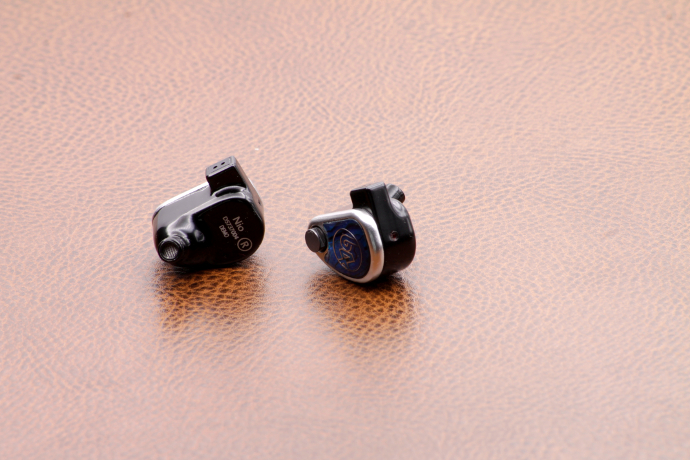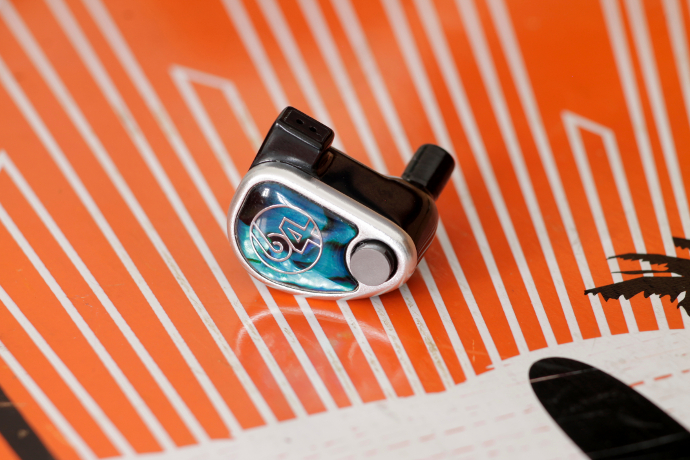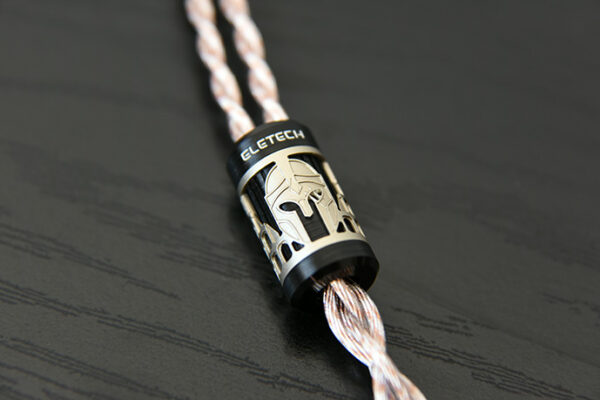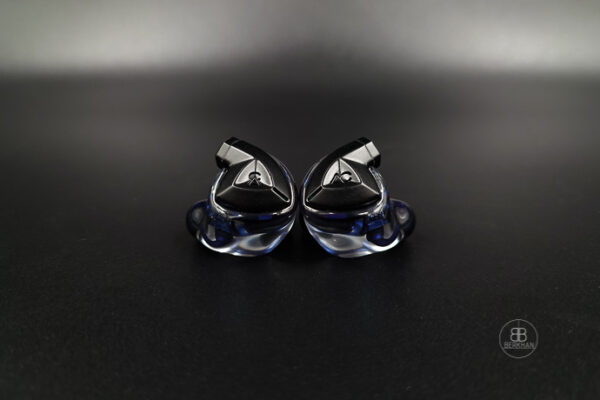Today we check out the Nio by 64 Audio. It’s their mysterious K-9 UIEM, which has been seen at many trade shows around the globe in the last months. It sells for $ 1,699 USD.
[responsivevoice_button]
Disclaimer: 64 Audio provided the Nio free of charge for this review. I only had to pay for importing the product. Headfonia is not affiliated with 64 Audio and they are not a site advertiser. Many thanks for the generosity and opportunity. The Nio remains 64 Audio’s property and can be asked back at any time in the future.
Please note: apparently the retail versions of the Nio have a more elevated bass and especially sub-bass than the version we received.
About 64 Audio:
64 Audio sure does not need an introduction here on Headfonia anymore, since this is review number eight within the last three years. But for anyone who still wants to learn more about this company, here’s a copy from the previous reviews:
64 Audio is an American brand of universal and custom fit In Ear Monitors seated in Vancouver, Washington. They have been previously known as 1964 Ears before they rebranded themselves to 64 Audio. The company was started by Vitaliy Belonozkho, who is also their chief sound engineer.
Back in 2010 the company was started after Vitaliy was building a monitor for his wife. Now, nine years later, they are one of the driving forces in the field. 64 Audio is one of the brands that continuously pushes the envelope for technologies. They have brought many inventions to the market. With their tia drivers they have introduced a completely new balanced armature driver, of which you can think as a hat-less design where the membranes radiate freely.
64 has also introduced apex modules, which stands for Air Pressure Exchange, these help your eardrums handle the pressure built up by conventional, fully closed CIEMs. Think of it as a secondary eardrum, placed in the audio path before it reaches your human eardrum. Apex relieves pressure and thus makes it easier for your ears to handle the audio waves.
Aside from these two inventions, 64 Audio has also released LID – Linear Impedance Design. This flattens the impedance curve of the monitor, making it more resistant to varying output impedances of many sources. Since 64 Audio is a pro-focussed brand, it only makes sense that they release a monitor that works well with high impedance pro-gear as well as low impedance audiophile electronics.
Many professional musicians use 64 Audio custom IEMs on stage. You can find performers like Beyonce, John Mayer, Bon Jovi and many others on their artist roster.
We checked out quite a few of their products here on Headfonia in the past. If you want to check them out, you can do that right here:
A18t – A12t – N8 – Tia Fourté – Tia Trió – Fourté Noir
About Nio:
The Nio (Nio = Swedish for 9) is 64 Audio’s latest universal In Ear Monitor. It uses a 10 mm dynamic driver for lows, an array of six balanced armatures for mids, a high-mid BA and a single tia high driver. The 64 Audio aficionado knows that this is the exact driver setup of their custom only N8. The drivers are arranged in a four way passive crossover.
According to 64 Audio, the Nio was developed to become a mix of the N8 and the U12t. They wanted to bring the effortlessly smooth N8’s signature together with the highly technical sound of the U12t. We’ll learn later if the goal was achieved.
The Nio comes equipped with 64 Audio’s proprietary apex modules. Which lets you change the isolation values between 15 and 20dB. By doing so, you can also alter the signature of the Nio to some degree. We will also take a look at that later.
Another 64 Audio only technology that’s found in the Nio is LID. With a flat impedance curve and a nominal input resistance of 6 Ohms, will stay clear of output impedance swings. As previously explained, LID will eliminate the effect varying output impedances have on the sound of Nio. The Nio is a moderately easy to drive monitor with a rated sensitivity of 105 db/mW. I don’t have to crank up the volume on my DAPs or DAC/Amps more than with other hybrids.
The Nio has just been released and sells for 1,699 USD. You can get it through 64 Audio’s online shop or one of their many global retail partners.
Build Quality, Comfort and Isolation:
With Nio 64 Audio also introduces a change in their universal IEM design. All previous IEMs I have had in my hands had a matte coloration and a simple, flat face plate. The Nio goes the exact opposite way. It has a glossy black body and a shiny silver top. The face plate features blue Abalone inlays and a silver 64 Audio logo on top. Also, the nozzle seems to be a bit longer than any other 64 Audio UIEM I have.
From a build quality point of view there are two one things that bothers me. For one that’s the missing lip on the nozzle. This essentially means, that there is a risk of having the ear-tip resting in your canals when you pull out the Nio. I came across this when I used third party silicone tips, and for that reason I sticked with what 64 Audio supplies. I have almost exclusively used the foam tips throughout my review time. Those held on tight to the Nio’s nozzle.
And then there’s a paint chip on the bottom of my right side’s shell. I assume that this is why mine became a demo pair in the first place. For showcasing the sonic qualities of the IEM it doesn’t have an effect and demo pairs are non-retail versions, meaning they can’t be sold by dealers anyway. If these were full retail units, I’d not have accepted this. But as said, the paint chip is probably the reason why these are demo units.
Like all 64 Audio universals the Nio also comes in a full aluminum housing. Personally, I would take metal housings over acrylic ones any day for universal IEMs. They are more robust and are more likely to survive a beating. Not that I’d recommend that.

64 Audio Nio
The face plate closes very nicely with just a fingernail thick gap between top and bottom side. There is one hole in the Nio’s body for pressure relief of the dynamic driver. It’s a very small outlet near the 2-pin sockets. These sockets are protruded and stand out more than on any of my 64 Audio Tia universals.
At the end of the nozzle you’ll find a protective mesh. This makes sure that no ear-wax or debris falls into the shells. The open tia drivers have to be protected especially. When you hold the Nio at the right angle you can also see the tia high driver.
Comfort-wise I haven’t had any issues with the Nio. It sits firmly and securely in my ears, and the foam tips help with isolation. The Nio’s outside noise blocking ability depends on the chosen apex module.
The review continues on page two!










Josep María
Hi, good review. Could you please compare the Nio to the Tia Trió? or point out their main differences? which one do you prefer?
I own the Trió and love it, although I would like a bit more soundstage (that’s something I liked from the Fourte), maybe I should consider a Sony Z1R rather than a Nio…
Thank you
Vince
Excellent review. Could you compare Campfire Solaris and Nio? They both have similar hybrid design and at a very similar price point.
I enjoy classical, pop, rock and EDM. Looking for something with solid bass and not too dry.
I have an old AK 70 Mark II and planning to get either Shanling M6 Pro or the Cayni N6 Mark II if i can come up with additional fund.
I look forward to your response. Thank you!
Wills
Hi Linus, would you be able to compare this to the Empire Ears valkyrie and the Tia Trio? Thanks
Steven Zore
Great review, I’m intrigued, but i wish there was a comparison to the new Solaris…
Lieven
We don’t talk about that “brand” here on Headfonia
John Wong
How does it compare to the Trio?
Phong Ngo
Any thoughts on Nio vs Empire Ears Nemesis?
Ryan
Thank you. How would you compare the Neo with the 64 audio Tia Trio?